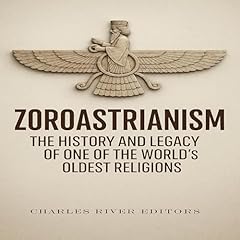
The Guelphs and Ghibellines
The History of the Rival Political Factions in Medieval Italy
Impossible d'ajouter des articles
Échec de l’élimination de la liste d'envies.
Impossible de suivre le podcast
Impossible de ne plus suivre le podcast
3 mois pour 0,99 €/mois
Acheter pour 6,24 €
-
Lu par :
-
KC Wayman
À propos de ce contenu audio
It has been famously pointed out that the Holy Roman Empire was neither holy, nor Roman, but it was also not an empire in the sense people expect when hearing the term, but it is clear that church clergy occupied a privileged place in medieval society. Europe had inherited Christianity from the Roman Empire, and the concept of a united Christendom and empire were practically synonymous. Indeed, there was no real consciousness of the Roman Empire ever having ended.
After the Western Roman Empire collapsed in the late 5th century, the Germanic rulers of Western Europe continued to recognize the Eastern Emperor in Constantinople until Charlemagne, and after the dissolution of the Frankish Empire, the imperial seat was transferred to Otto I, King of East Francia in modern Germany. This translatio imperii (“translation of empire”) from Rome to the Franks, and then to the Germans, was universally accepted by Christians, and in theory, the empire was supposed to encompass all of Christendom. By the late 10th century, however, the emperor’s reach was rarely felt beyond Germany and northern Italy, and the question of who was supposed to be the imperial head was unresolved. The emperor claimed rights over both church and state, while the pope, who placed the crown on the emperor’s head, asserted his supremacy over all princes, even the emperor.
Papal supremacy in ecclesiastical matters had long been asserted and was, by and large, unchallenged. But in the late 11th century, Pope Gregory VII asserted authority in the temporal sphere as well. In a long dispute with Emperor Henry IV over who had the right to appoint bishops and abbots, Gregory decreed that the pope “alone may use the imperial insignia,” that “all princes shall kiss the feet of the pope alone,” and “that it may be permitted to him to depose emperors.”

Vous êtes membre Amazon Prime ?
Bénéficiez automatiquement de 2 livres audio offerts.Bonne écoute !

























